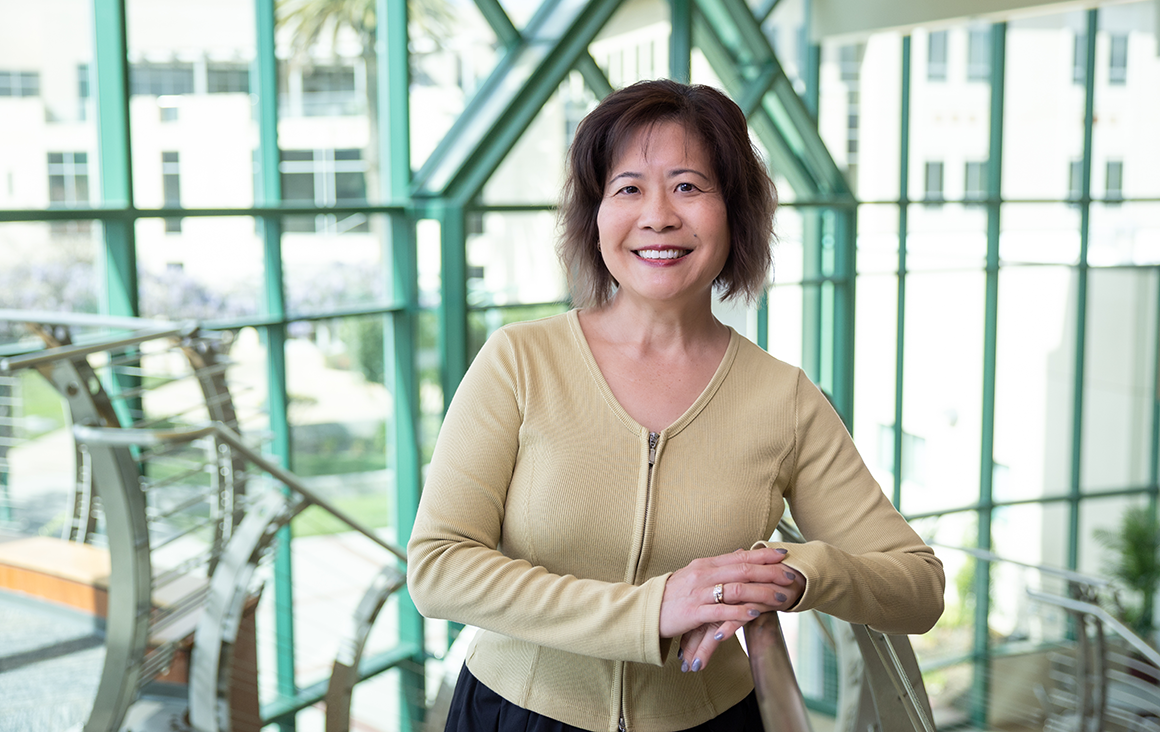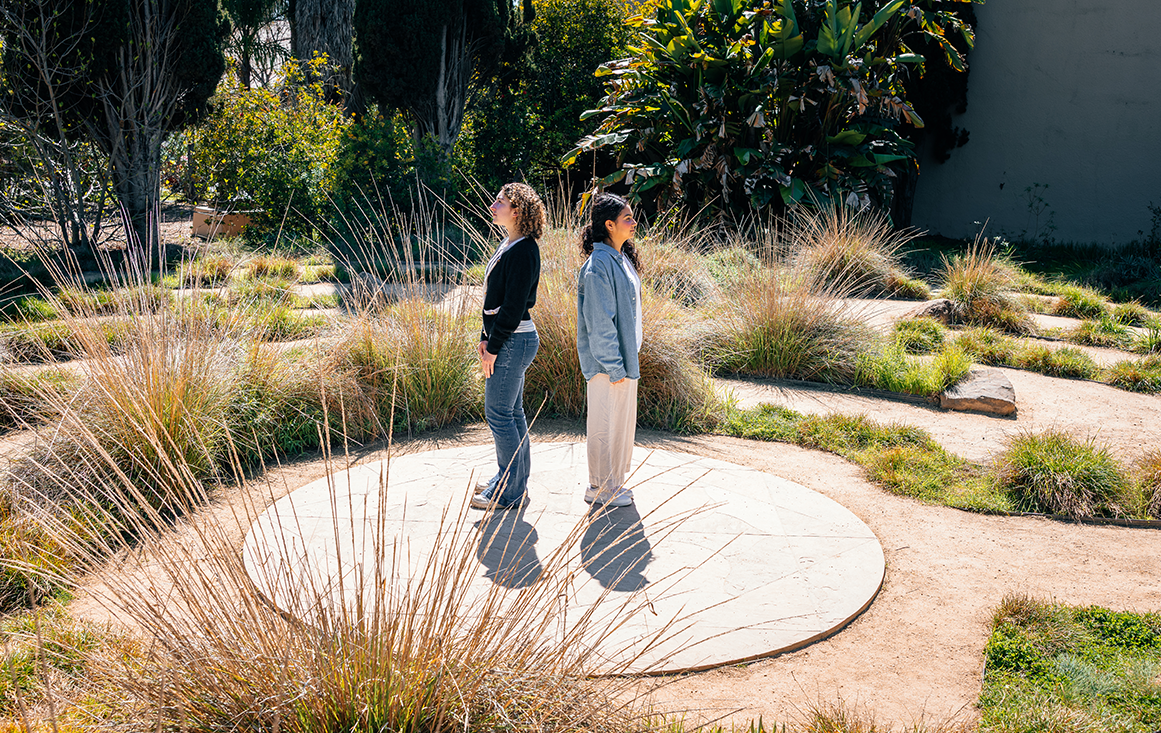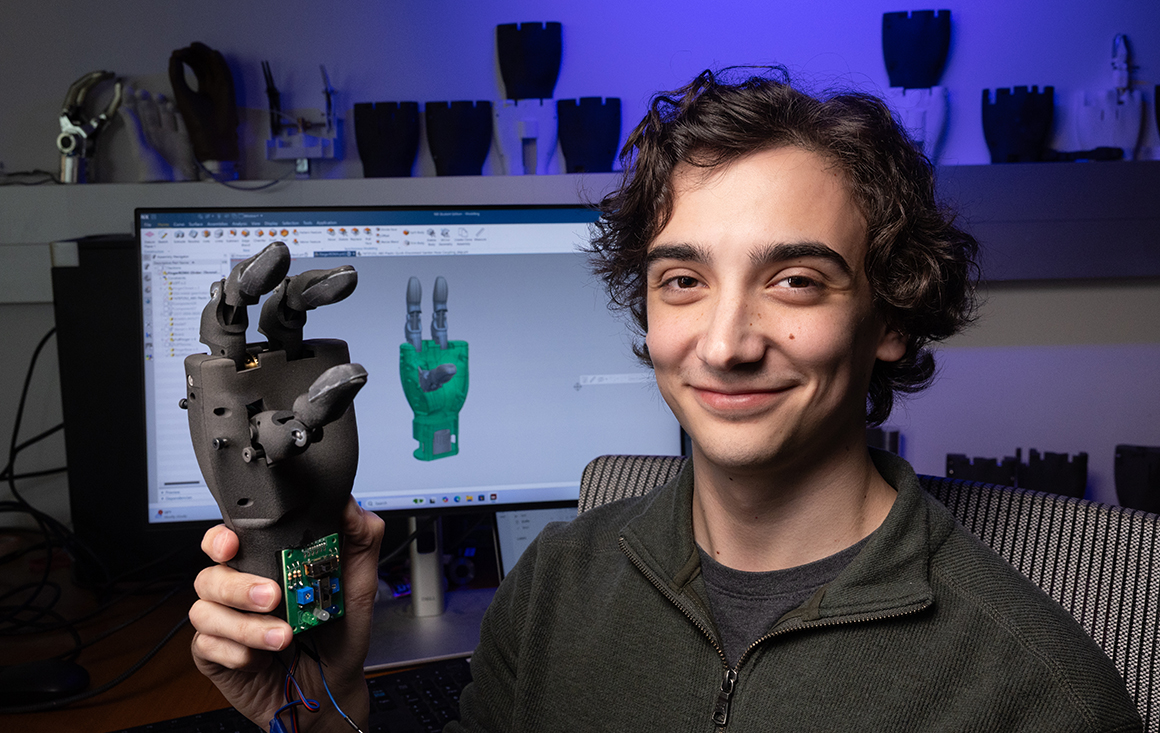Getting to Know Matthew Carnes, S.J.
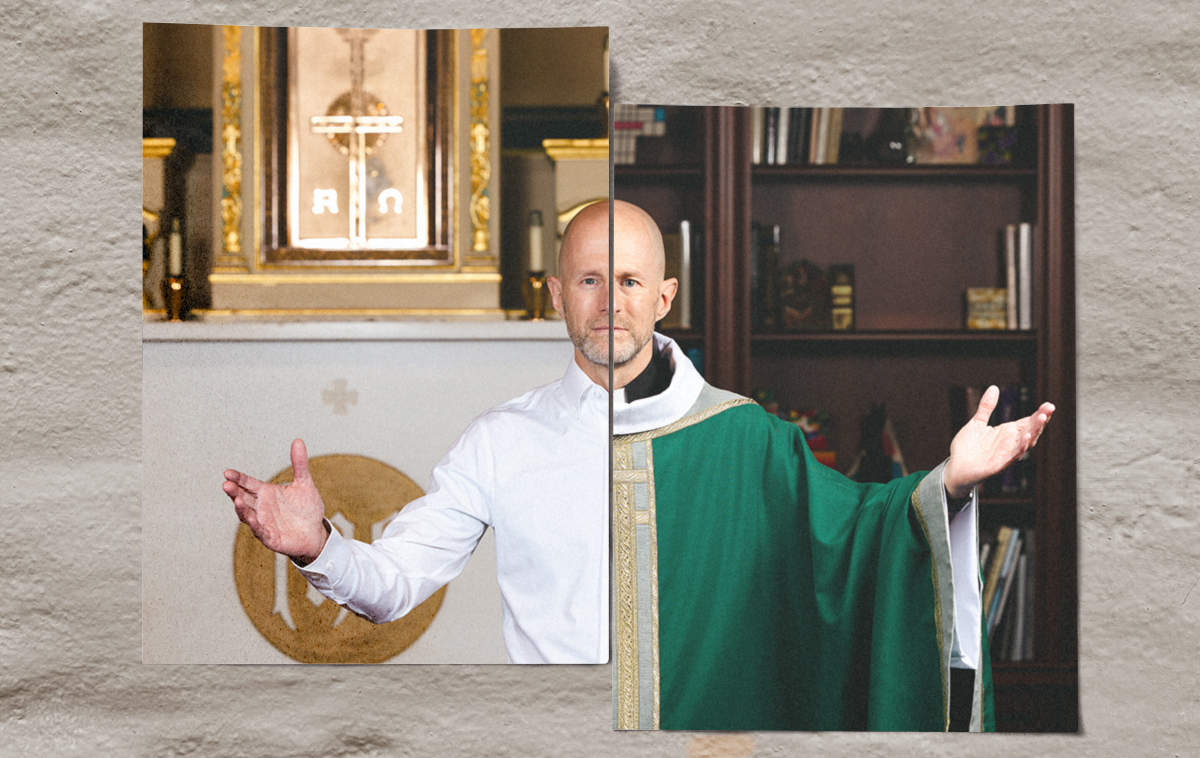
In higher education, Matthew Carnes, S.J., has always operated in two worlds, right down to his clothes.
As a political science professor at Georgetown, Carnes remembers wearing clerical attire when he taught classes about Latin America and South America. Jesuits don’t have to wear a collar when they teach, but Carnes thought it was important for students to see that a religious person could do serious intellectual work in a secular field.
Similarly, for religious studies courses and priestly work in the community, Carnes often wore a simple button-up shirt and tie. The idea was to remind students that clerics were also human beings who had questions about the world.
“Sometimes in my teaching evaluations, students would comment on my clothing choices, ‘Oh, I like the tie better,’ or ‘You should wear that shirt more,’’ Carnes recalls. “It was pretty funny.”
The clothes were a small detail, but not as trivial as it might seem. It was a subtle reminder to students that, in true Jesuit fashion, Carnes brought his full self into all situations, and that was a good thing.
For example, his lectures on labor and social welfare didn’t involve matters of faith, but the course structure was framed around Ignatian discernment and a commitment to justice. Or if he was leading a religious retreat, students weren’t just quoted scripture but encouraged to look at the world and see where they fit into it.
The same was true of his work as vice dean for faculty and graduate affairs at Georgetown University’s world-renowned Edmund A. Walsh School of Foreign Service (SFS) and as director of Georgetown’s Center for Latin American Studies. He brought the totality of his experience living and working with communities across the hemisphere and his expertise as a scholar to serve students.
As the new vice president for Mission and Ministry at Santa Clara, Carnes is again trying to reach students where they are, albeit at a different scale. While his day-to-day responsibilities include overseeing Campus Ministry, the Ignatian Center for Jesuit Education (ICJE), and the Mission Church, his big goal is to bring the impact of a Jesuit education to all students, regardless of their religious background.
“The Ignatian approach meets people where they are and invites them to reflect on what’s really important to them,” Carnes says. “So, whether a student comes in with a strong experience of faith or no experience of faith or a mixed experience of faith, we really want to engage with what their questions are today.”
With more young people seeking community and a sense of purpose, Carnes sees a real opportunity to make a difference, but he knows he’ll need more than a thoughtful wardrobe.
Recently, Carnes sat down to discuss the future of Mission and Ministry at Santa Clara, what he learned from his time at Georgetown, and what it takes to make a global impact.
Many people don’t know this but your higher-ed journey started right here. When you were completing your Ph.D. at Stanford, you lived in the Jesuit Community in Walsh Unity Hall at Santa Clara. Why did you decide to come back to the Bay?
Coming to Santa Clara was something that really excited me because I felt I could be part of a community that will move the needle on a whole lot of issues, both internally and externally. I always say every Jesuit university is where it is for a reason. Georgetown was founded at the same time as Washington, D.C., at a time when people from different faiths came together to govern a new nation. Likewise, Santa Clara was founded in 1851 in response to the gold rush where migrants of different faith traditions came together to create and discover new things.
That’s still true today. People flow to Silicon Valley from around the globe to be part of the spirit of innovation, but not everybody shares in that opportunity. Recently, President Julie Sullivan said in her Impact 2030 strategic plan that the world needs Santa Clara, and I think that’s true. Not simply because of our technical skills in science and engineering or the education we offer in business and the arts, but because of what brings us together—our sense of purpose. We truly believe our world can be better and this vision is born out of our faith. You don’t hear Stanford or Cal Berkeley talking in the same way. They both have important missions, but I don’t think their mission is the same as Santa Clara’s.
President Sullivan recently announced the Mission Priority Examen, which you will lead. This request comes from the Jesuit Superior General and the last one was in 2019. It will involve you talking to members of the campus community about how our mission plays out at Santa Clara. What do you hope to learn from this exercise?
I think every university needs to constantly engage its values and think about how it responds to unique moments. For Santa Clara, the context is important. We’re right at the start of our Impact 2030 plan. We’re now in the third year of President Sullivan's leadership. We have several other new leaders on campus as well. And of course, every year brings fabulous, creative new students, faculty, and staff into our community. It’s a great opportunity to collectively steer the ship in the direction that is most responsive to the needs of our time. In a particular way, it gives us a chance to reflect on how we’re responding in a very rapidly changing economic and political climate where a lot of trusted institutions are being called into question. Having a clear sense of who we are, what we stand for, and how we live out our values could not be more timely.
The School of Foreign Service at Georgetown was recently named the best school of international affairs in the world by Foreign Policy Magazine. In addition to serving as its dean of faculty, you taught comparative politics for 18 years. Tell us a little about your academic scholarship.
Comparative politics is really politics around the globe—the ways that countries organize and govern themselves which can take so many different forms. I lived and worked in Latin America and South America throughout my adult life and that informed a lot of my work. As an undergrad, I studied abroad in Mexico and Chile. During my Jesuit formation, I spent a year accompanying communities engaged in reconstruction work in northern Honduras after a devastating hurricane. For my dissertation, I undertook three years of field research on labor policy in Argentina, Chile, and Peru. The list goes on.
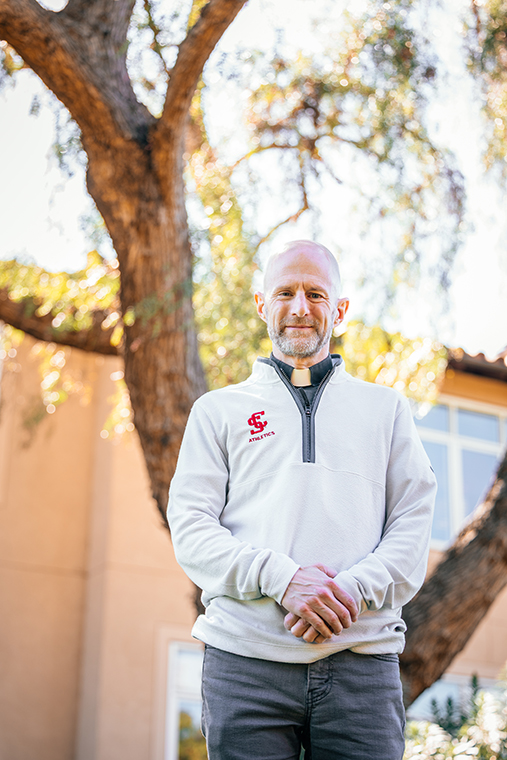
For 18 years, Fr. Matthew Carnes taught political science at Georgetown University.
Working in these regions, I saw issues of inequality and distribution of resources play out in front of me. My first book, which was published in 2014, was on labor regulation in Latin America, and a lot of my later writing was on this topic, especially in places like Chile.
I loved my work at Georgetown because it gave me a chance to work with top thinkers who were motivated and asked interesting questions. I got to interact with diplomats on important topics and sometimes saw our conversations have a real impact on the work they did. We also had so many international students at Georgetown, which was a real gift. I learned so much about the way different cultures approach things. It showed me how beautifully and challengingly diverse our planet is. I used to joke that whenever I brought up a small country in class there might be someone from that country in the room. Sure enough, students would come up and say, “I’m from Vanuatu” or wherever. It was really fun.
You mention income inequality, which has become a very timely issue but one that can be difficult for people to discuss. What got you interested in that area of study?
When I was 17, I spent a summer working in a village with no electricity on the eastern border of Paraguay. At night I could literally see lights from the world’s largest hydroelectric dam, which had been recently constructed over the border in Brazil. I remember thinking, “How could there be so much electricity there and none here?” I even thought, if I had the time, I could run the wires myself. So, I started to ask questions about why we see a distribution like this. Ultimately, I learned that the answer was complicated. Part of it was that the country of Paraguay had chosen to prioritize funds for education — gained by selling the electricity to Brazil — over electricity for its own citizens. Then, in subsequent years, it came out that there had been corruption in the delivery of some of that money. There were all these layers, which started my interest in the distribution of resources and topics like labor and social welfare policy.
As the years went by, the problem has evolved. I remember in my third year of teaching; we were looking at the different ways countries grow in prosperity and opportunity for their citizens. What jumped out about the data was that while income inequality between countries had gotten better over time, the difference within countries had only gotten more pronounced. This wasn’t just a couple of countries, it was around the world.
I remember reflecting in the moment to my class, “Given this data, I predict the division between the rich and the poor is going to be one of the most important issues in the world in the coming decades—and one we will need to grapple with.” So, we did, and indeed, we still are. In engaging these topics, it was especially important to acknowledge that we were in a university environment. Just by coming to a university like Georgetown or Santa Clara, you almost automatically put yourself in the top one or two percent of the world in terms of opportunities. And that’s why we feel such a responsibility to ensure that others have these opportunities as well.
Now, this can be uncomfortable, but that’s where real education happens—in discomfort. This isn’t a problem we’re just going to fix overnight. Nobody is saying that all of us could or should have perfectly equal incomes or resources. That’s physically impossible—believe me, I’ve studied it. But you don’t give up. You keep trying. It’s easy for people to wall themselves off if they’d rather not think about something. So how do we—and here I will get religious—keep asking God or asking those around us to soften our hearts so that we feel solidarity and connection to every human person around us? It takes a concerted effort and that’s something I don’t think I could have articulated before thinking about it closely with students.
When you think of projects that can move the needle at Santa Clara, what comes to mind?
Global engagement is a big priority. Working at Georgetown, I was fortunate enough to travel and actually see its global reach. There are 189 Jesuit universities around the globe and I don’t think we leverage those partnerships enough. JST is a big part of that with its Collaborative Theology Initiative. I think this year’s class was 81% international so the people we’re educating are going to make a huge difference around the globe. But there’s more we can do. Looking at our Ignatian Center immersions and initiatives like the Frugal Innovation Hub in the School of Engineering and the great work of the Miller Center, there are opportunities to dialogue better and build professional partnerships with other Jesuit universities in countries in Latin America, Africa, and Asia. We don’t have a clear path yet, but we’re starting to explore those things.
What kind of role do you see the Ignatian Center playing in thought leadership?
I look at how the Laudato Si encyclical from Pope Francis motivated so many people to take climate change seriously and I hope we can make a similar impact. It’s always an uphill battle to get on people’s radars because there’s so much research being produced, but so much of what’s being produced doesn’t speak to the deepest issues. Considering our resources, the faculty at Santa Clara has a real comparative strength in areas like ethics, the environment, wellness, and other related topics where I think we can break through.
We’re working in close partnership with the Markkula Center. They have a strong vision for how they engage in thought leadership. The Ignatian Center has a journal called Explore, which we want to strengthen. I’d also like to expand the Bannan Forum, which was founded as an intellectual hub for faculty and scholars from around the world to do research related to faith and global engagement. Sometimes faith can be perceived as less systematic or rational. But when we join faith with research and classroom learning, it can be a catalyst for students to recognize that this is intellectually rich work and that the collective wisdom of faith traditions is hugely relevant.
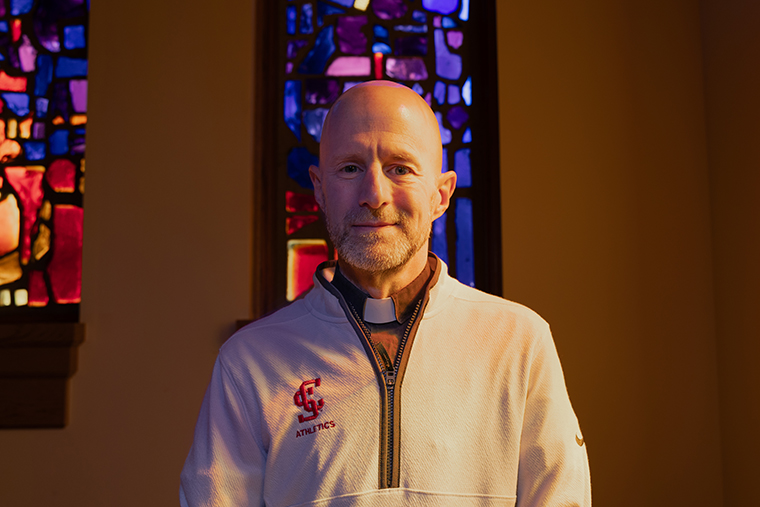
The role of religion has changed somewhat at Jesuit institutions over the years. In many ways, young people are less religious than ever, but at the same time, many are struggling with loneliness and finding purpose in their lives. How do you see Mission and Ministry meeting the needs of students at Santa Clara?
One good thing about Ignatian education is that it confronts people with the reality of the world. It says: we live in a world that has incredible opportunities and beauty, but at the same time is pretty broken. Look at Silicon Valley. On the one hand, it has this physical beauty and tremendous creativity and opportunity. On the other hand, we have a lot of people who don’t share in those opportunities or work in jobs that undergird it but don’t receive wages or benefits that allow them to flourish.
One common response to this is despair or cynicism, which was only made worse during the pandemic. My hope is that rather than becoming disheartened, our students are given resources to find a sense of hope and possibility. At the most basic level, our religious worldview acknowledges that there is something bigger than ourselves—something that has been going on for 14 billion years in terms of the universe and thousands of years on this planet as humans have strived for good and built community. In addition, these faith traditions have collected wisdom on tough questions through religious texts. Having this as a resource can be deeply consoling and gives us a sense that there is a possibility for change and that we can be part of that change.
Recently, there’s been a trend of some young people rediscovering some of the traditions around Zen Buddhism. Do you see a similar opportunity for other faith practices?
Absolutely, and you do see some of that already. If you look at traditional Catholic practices and Jewish practices, they have a built-in rhythm that can be incredibly healthy. For example, we are so connected nowadays that we can work seven days a week. The idea of the Sabbath means that each week, there’s a pause where you say, “I’m not a worker. I’m actually something else.” On top of that, it encourages you to look around and give thanks for the beauty of creation—that’s powerful, that’s wisdom.
Ignatian discernment is another relevant ritual. I talk a lot to students about FOMO or the fear of missing out. I frequently see students who won’t commit to an opportunity they’re excited about because something better might come along. This is a stressful way to live because you’re always kind of living halfway. You’re always looking back. Ignatian discernment is all about this decision-making process. It helps you consider options and then choose the better thing. So, once we’ve gotten ready to choose, go do it. That’s when the fun starts. In fact, one of my favorite parts of Jesuit education is when I get to walk with somebody who is discovering the unique way God shines in them or makes their heart flutter. That’s what we try to do at Santa Clara, help people find the unique way they can say, “Okay, this is where I can find happiness and make a difference in my life.”
Finally, I think living in the moment is really important. There are parts of our humanity that are just too important for us to give anything but our full attention. I will drop everything to be present when friends are going through hard times. When my parents were nearing death, every one of those minutes was so precious. Sometimes I see students push through a difficult time because they’re “supposed to be professional.” To me, that’s just not true. It’s way more important to take the time you need. Then don’t be afraid to share with people and let others help.
The Division of Mission and Ministry is charged with clearly articulating and broadly communicating Santa Clara University’s Jesuit, Catholic mission and character.
